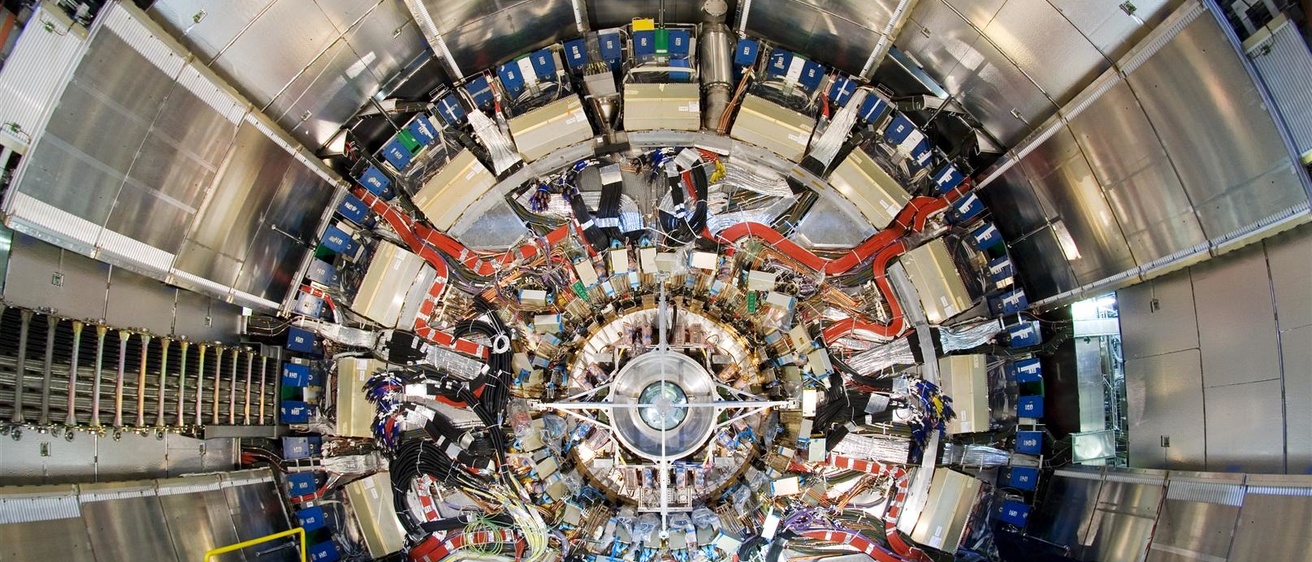By Richard Lewis
The world’s most sophisticated subatomic particle collider is getting an upgrade, and two University of Iowa teams are designing, building, and testing a new generation of subdetectors that could yield more discoveries in particle physics.
UI physicists are prominently represented in international scientific collaborations working on the two main detectors at the Large Hadron Collider (LHC), the particle collider in Switzerland whose numerous findings have broadened humanity’s knowledge about the birth and evolution of the universe.
One team, led by Usha Mallik, professor in the UI Department of Physics and Astronomy, works with ATLAS, a giant particle detector at the LHC. A second team, led by Yasar Onel and Jane Nachtman, professor and associate professor, respectively, in the UI Department of Physics and Astronomy, is involved with the Compact Muon Solenoid, the other particle detector at the LHC.
It’s rare for a single university to have groups simultaneously dedicated to both ATLAS and CMS research at the LHC.
Each UI group was selected to help create new subdetectors for ATLAS and CMS when the LHC resumes full-time particle collisions, scheduled for 2026. The underground subatomic smasher will take two separate breaks beginning at the end of this year to allow for upgrades to both its particle accelerator and its ATLAS and CMS detectors. The upgrade, called the High-Luminosity LHC, will boost the rate of collisions by a factor of five, greatly increasing the LHC’s ability to search for new particles and the chance for new insights into what makes the universe tick.
That’s where the UI physicists come in.
The ATLAS group led by Mallik will create and lead computer simulations that will model how the new subdetector, called a High Granularity Timing Detector (HGTD), will operate and how it will read the proton beams and collisions generated by the accelerator. That work includes simulating the detector and estimating its performance in the high-intensity environment. The group also will conduct beam tests for the precision silicon sensors.
“We’ll make pretend detectors and conduct beam tests in model simulations, and then we’ll try to see what the physics would be like, how much beam we’ll need, how many events we’ll need to get something sensible,” says Mallik, who also is in charge of designing the detector control system for the HGTD. “It’s a cold run, so to speak.”
The CMS group will design and build sensors and some of the hardware to more accurately track and time the paths of individual particles created in the violent spray generated by proton collisions at the LHC. The goal is to detect particles passing through the subdetector within 30 trillionths of a second of each other.
“When the luminosity (rate of collisions) increases, there will be a pileup of events, and it will be difficult to know the origin of each event from the collisions,” Onel says. “Our device will be able to separate those events.”
“The work we do in our labs will help inform the decision on the types of sensors we use, and our experience with radiation testing will ensure that the detectors can withstand the high radiation environment of the HL-LHC,” Nachtman adds.
The goal with each subdetector—and the LHC upgrade more generally—is to learn more about the state of the universe just a trillionth of a second after the Big Bang.
In that tiny fraction of time, innumerable particle collisions spawned the universe we know today. Physicists have been trying to unravel the seemingly infinite chain of events that marked the universe’s birth, but have been stymied to identify and separate signature collisions from the other secondary collisions that occurred.
“We have an unprecedented opportunity to precisely measure properties of the Higgs Boson (the particle believed to give mass to all other particles) and possibly discover new physics,” Nachtman says. “This will be possible because the HL-LHC will deliver more proton-proton collisions than ever before. Disentangling the thousands of particles produced by these interactions is a difficult challenge, but it will be made possible by the precision timing detectors being designed by the CMS and ATLAS collaborations.”
Mallik says the LHC upgrade could clarify the Standard Model, the theoretical framework for the laws that govern the universe. Physicists have learned a lot about the forces, particles, gravity, and energy that form the pillars for the universe’s functioning, but major questions remain, such as the origin of gravity and the widely believed presence of dark energy and dark matter.
“The Standard Model is a beautiful theory because it explains more or less all things we see in everyday life and beyond,” Mallik says. “However, now that we know much more, it means the Standard Model is an incomplete theory, to say the least. Our goal is to break the Standard Model because only when you find where there’s a crack, you find out where the light is coming from.”
